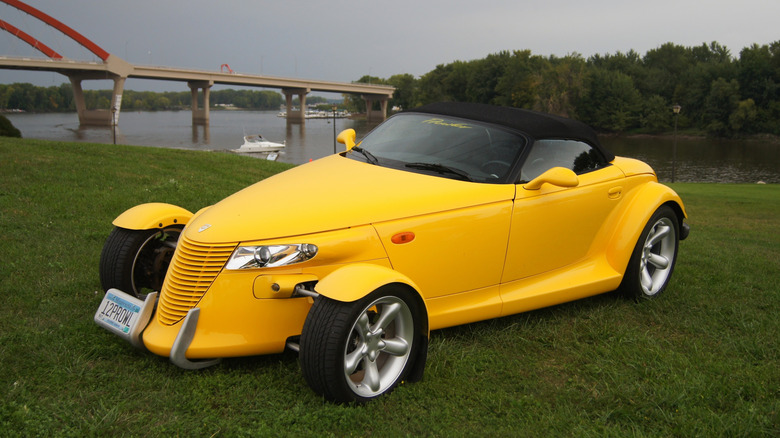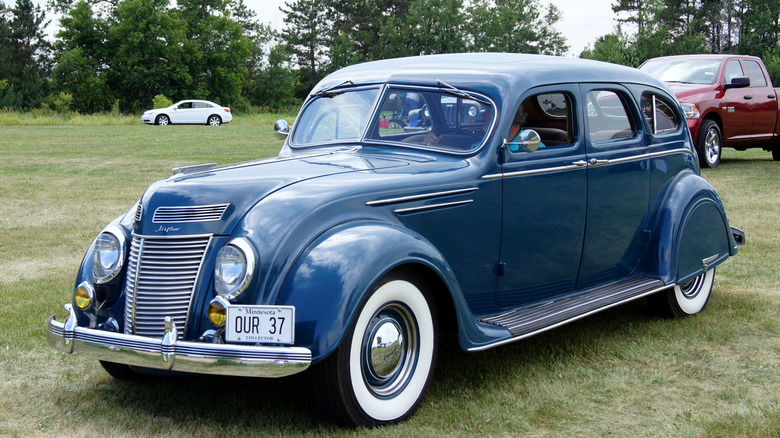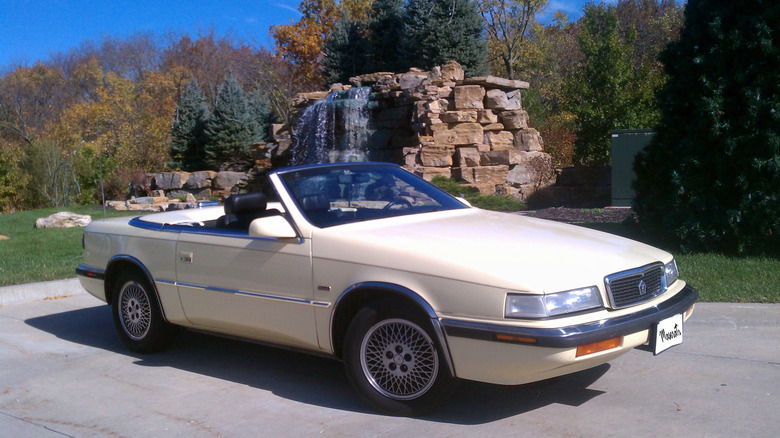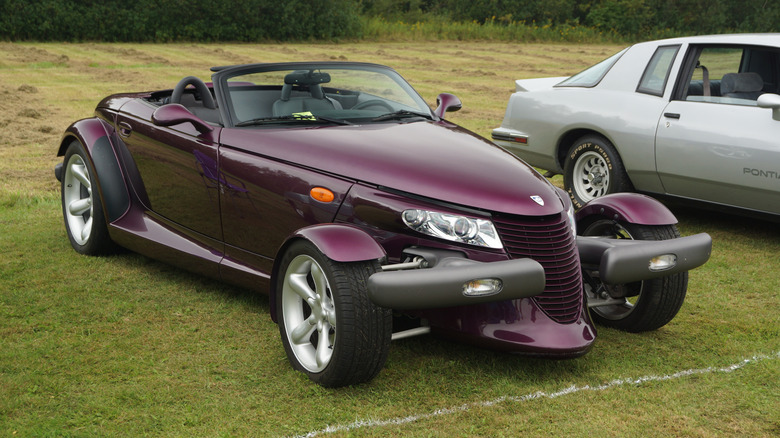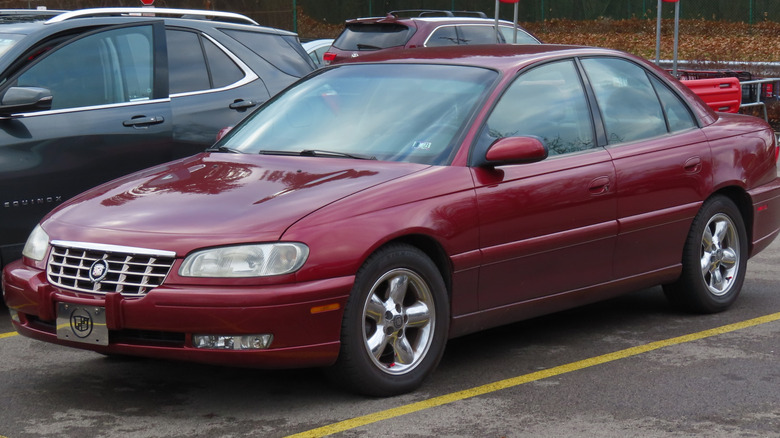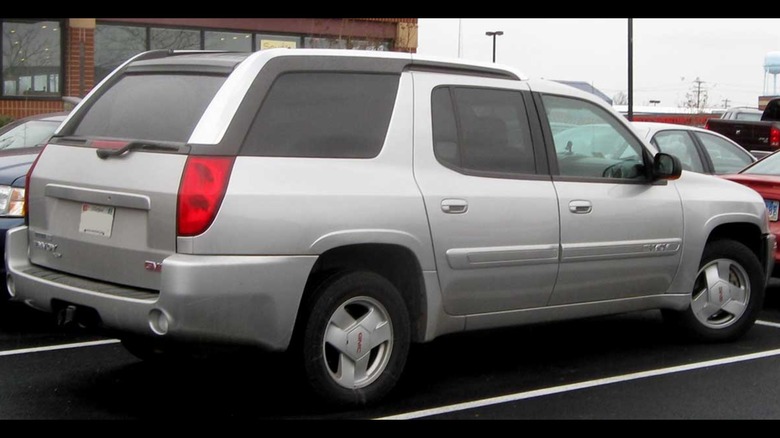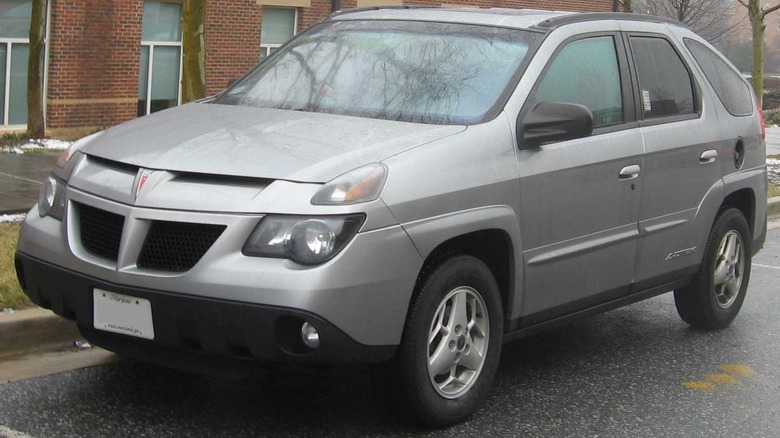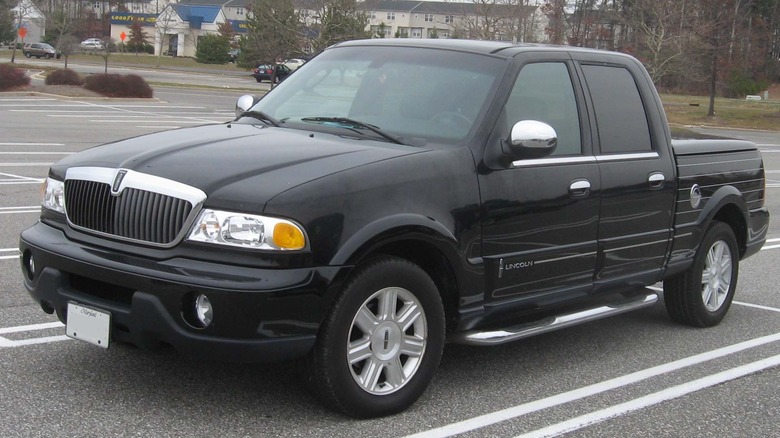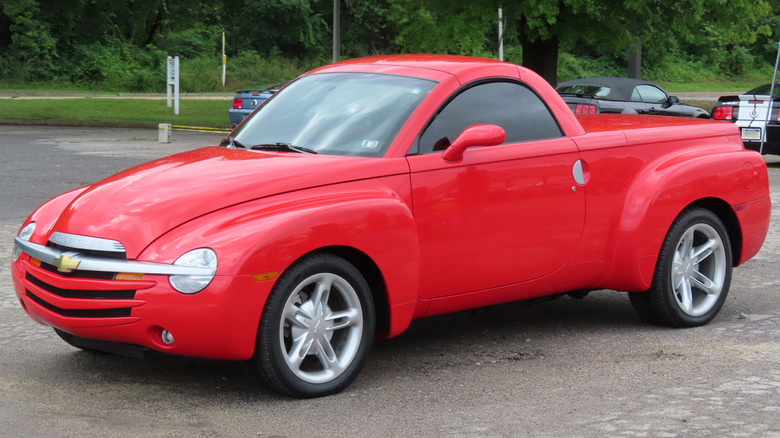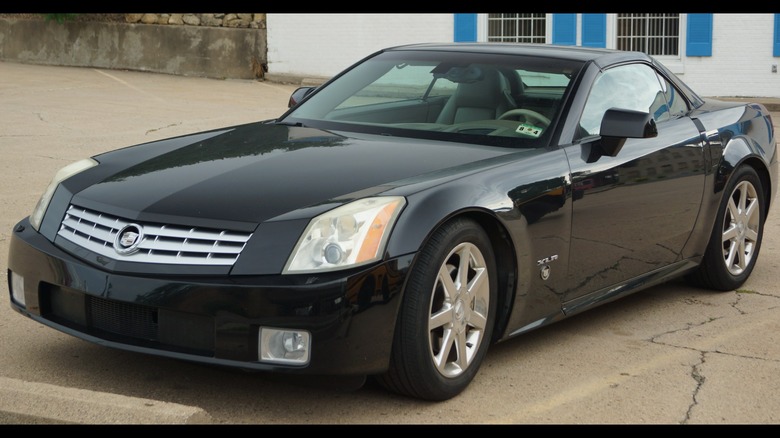10 Of The Worst-Selling American Cars Ever Made
You might think car companies, with gigantic marketing budgets, vast amounts of money they spend on developing new models, and huge teams of engineers and designers, would usually get new car models right. Yet, this is not always the case, as some models fail miserably in the marketplace. Sometimes, a car or truck generates so little excitement that it fades into obscurity, forgotten by all but the most knowledgeable car buffs. In other cases, a vehicle flops so spectacularly that it becomes the stuff of legend.
There are numerous reasons why car models fail. Ford's biggest car flops include a few models that developed reputations as safety disasters, as well as a whole brand that missed the mark, which we'll see below. Saturn is another brand that flopped for reasons that included marketing errors and poor timing. And lest it seem like only domestic manufacturers occasionally misread the market, even Honda has some big flops in its company history.
We'll restrict our focus to American cars that failed, with failure defined as a car that sells only a fraction of the number that the manufacturer intended. This includes both high and low-volume models that didn't live up to expectations. We'll leave out models like the Ford Pinto, which sold almost half a million units in its best year before safety issues cratered its sales. We'll also see some cars that were major failures, but are worth a massive fortune today.
Chrysler/DeSoto/Imperial Airflow
The Airflow represented a generational leap in design and engineering with its aerodynamic exterior and unibody construction. It advanced the art and science of car making from the days of flivvers straight into the modern era, only to fail resoundingly on the sales charts. According to Hagerty, Walter P. Chrysler even bragged that it was "the first real motor car in history." If so, history would have to wait. From 1934 to 1937, it was arguably the most advanced car on the market, but it would be decades before its design features became mainstream.
The Airflow resulted from tests conducted in the 1920s in the industry's first wind tunnel, the brainchild of Chrysler engineer Carl Breer. After discovering that their cars were more aerodynamic from the back than the front, his team created a whole new streamlined paradigm in car design. A cage of trusses surrounded the cabin to provide support, rather than a traditional ladder frame. This allowed them to move the engine forward between the front wheels and to move the cabin forward between the axles, greatly improving the ride and interior space.
Combined with an exterior sculpted in the wind tunnel, the Airflow was a quantum leap forward. The Chrysler, DeSoto, and Imperial divisions each received a version. However, buyers were cold to the design, and the car's high price harmed its sales prospects during the Depression. Just over 25,000 Chrysler and DeSoto Airflows were sold in 1934, but the number dropped to 4,600 by 1937. Yet its influence on automotive design echoes through history.
Ford's Edsel Brand
Edsel was the biggest flop in Ford's history. In fact, it has become legendary as one of the industry's most spectacular failures, a complete misreading of evolving market trends and consumer preferences. While it's often depicted as a single car with its distinctive and controversial vertical grille, Edsel was actually a brand that Ford intended to compete with General Motors' mid-range marques like Pontiac, Oldsmobile, and Buick, as well as Chrysler's Dodge and DeSoto divisions. A committee of executives, known as the "Whiz Kids," determined that Ford needed a brand positioned between Ford and Mercury that would focus on the medium-priced segment of the market.
In the end, Edsel became an example of the limitations of design by committee. Even its uninspiring name was chosen by the Whiz Kids to honor Henry Ford's son, Edsel Ford. Thousands of other names were rejected. There were 18 Edsel models in its debut year of 1958, but that may have diluted the brand's focus rather than helping it, since people were already unclear on what exactly an Edsel was supposed to be. Ford attempted to simultaneously attract young, performance-oriented buyers and conservative middle-aged drivers, ultimately satisfying neither group.
Ford spent $250 million designing and marketing the new brand and its cars. Brisk initial sales soon faded. It didn't help that by the time the Edsel lineup debuted, the medium-priced car market was in decline, while compact vehicles were gaining popularity. Ford sold only one-third of what they had hoped to sell. Edsel became a byword for catastrophic corporate failure.
Chrysler TC by Maserati
There were many reasons the Chrysler TC by Maserati was a failure. Perhaps that mouthful of a model name contributed, but the car itself was a perplexing exercise in design, engineering, and marketing from the initial concept right through cancellation. It looked like a Chrysler LeBaron convertible, a pleasant enough but hardly inspiring car, yet it wore the name of an Italian brand known for creating sexy and exciting high-performance driving machines.
It also wore a Maserati price tag in the mid-$30,000s, which was some serious scratch in the late 1980s. Buyers were confused and stayed away in droves, grabbing only 7,300 TCs during its three-year run from 1989 to 1991. With a total cost of about $600 million to design and build the TC, Chrysler lost almost $50,000 on every one they sold. That arguably makes it one of the most epic flops in automotive history.
It wasn't necessarily a horrendous car. Its Italian-built body provided an upscale take on the LeBaron that shared its platform, and the TC can be viewed as handsome for its time. Engines included a Chrysler-built turbo four-cylinder, a 16-valve Maserati-built inline four mated to a Getrag manual gearbox, and a Mitsubishi-built V6. It came loaded with standard features like a 10-speaker sound system and power-adjustable leather seats. But its $33,000 base price, during an era when a LeBaron started at $19,000, simply made no sense to the car-buying public.
Plymouth/Chrysler Prowler
A car that looks like a custom hot rod right from the factory? Sure! With a 3.5-liter V6? No thanks. That essentially sums up the public's reaction to one of the wildest-looking factory cars of all time, the Plymouth Prowler, upon its introduction in 1997. The reasons the Plymouth Prowler was a failure could fill an entire article, if not a decent-sized book, but let's start with that V6. This 3.5-liter, 214-horsepower unit and the accompanying four-speed automatic were borrowed from Chrysler's LH sedans. Its steering rack came from minivans.
Its suspension came from the Dodge Viper. If only more of the Prowler were made of Viper bits, it might have lived up to its hot rod looks. The car did have some interesting design features, such as its extruded aluminum tube frame and aluminum main body tub. The suspension control arms were made via a unique process that combined casting and forging. With such a lightweight, mostly aluminum construction, the Prowler managed a semi-respectable 7.1-second 0-60 time.
A new aluminum-block V6 making 253 horsepower would lower the 0-60 time to 5.7 seconds in 1999. Unfortunately, the Prowler's underwhelming reputation was already set. But worse still, the entire Plymouth division ceased to exist after the 2000 model year. The Prowler would continue for two more years as a Chrysler model before being discontinued. Yet some argue that the Prowler's risk-taking design helped rejuvenate Chrysler's brands overall, and the car now has fetched upwards of $60,000 at auction.
Cadillac Catera
Sometimes a model flops so badly that it forces a rethink of an entire brand. Meet the Catera, one of the Cadillacs that everyone forgot existed – or they wish they did, in the Catera's case. From the 1997 through 2001 model years, Cadillac imported the Opel Omega from GM's European division and rebadged it as a Cadillac Catera. Now, the Omega was considered an executive car in its Old World stomping grounds, but American buyers didn't view its Catera clone in the same way.
Its unfortunate resemblance to cheaper cars like the Chevy Malibu didn't help to make the case that the Catera was a premium car. Cadillac did its best to market the Catera as a European-style luxury sports sedan in a different mold than Caddies of the past, even branding it as "the Caddy that zigs." That wasn't necessarily the craziest approach since, well, a Euro-sports sedan is exactly what this car was.
However, the Catera was a bridge too far for the brand's loyal buyers. A troublesome mechanical reputation sealed the model's fate, with Cadillac selling only about 5,500 Cateras per year. The division was forced to do a complete rethink of its sports sedan ambitions, turning to a home-grown model for the Catera's successor, the CTS. This was the first step toward the CTS-V, widely considered one of the best Cadillacs of all time, and then later to the brand's Blackwing models, the awe-inspiring descendants of the humble and awkward Catera.
GMC Envoy XUV
Like a Transformer, the Envoy XUV converted from an SUV to a pickup truck. It just didn't do it very well. The concept behind it wasn't the worst idea to come out of GM, but in execution, it ended up being one of the strangest cars ever built by General Motors. GMC only sold 27,000 Envoy XUVs in two years before pulling the plug. Interestingly, the concept of a roof that slides open to create a pickup bed had first been seen forty-one years earlier on the 1963 Studebaker Wagonaire. Of course, Studebaker went out of business just after that, so a passenger vehicle that transforms into a pickup truck has somewhat of a checkered history.
In the Envoy XUV's case, the cargo area was covered as in a traditional wagon or SUV, but there was a foldable midgate separating it from the passenger compartment. The rear tailgate dropped down like a pickup truck or station wagon (shades of the Wagonaire). Both gates had power windows that rolled down. The rear tailgate would also swing open sideways to a 60-degree angle. But the most interesting feature of the Envoy XUV was a roof panel over the cargo area that could move forward over the rest of the roof, sliding neatly between the roof rails.
Add in a water-resistant cargo area with five drains, and you have a functional pickup truck bed, albeit one bracketed by the Envoy's SUV-style rear quarter windows. However, the process of retracting all the various windows and panels and folding the midgate was complicated, and buyers just didn't quite see the utility of it. The Envoy XUV wound up as a forgotten oddity, produced only in 2004 and 2005.
Pontiac Aztek
The reasons for the Aztek's failure are obvious from the outside: Just look at that exterior. Yet a show about drug dealers in New Mexico somehow made it cool, albeit many years too late. Leaving aside its 15 minutes of fame as one of the coolest cars on "Breaking Bad", the Aztek's hideous exterior belies the fact that it was actually an innovative vehicle for its time. The result is an SUV that polarizes opinions, with some seeing only the reasons the Pontiac Aztek was a failure, while others argue that the Aztek's features make it a cool car.
Regardless, the market reacted to the Aztek with a shudder. While Pontiac hoped to sell 75,000 of them per year, the highest sales total was just under 28,000 units in 2002, the Aztek's second model year. In 2005, its last year, it sold just 5,000. Therefore, even in its best year, the Aztek was a gigantic flop. Even a mid-cycle refresh that removed the Aztek's ugly gray lower cladding couldn't overcome the fact that it had a face that only a mother could love. However, its owners tended to adore the Aztek.
This is largely because it was a genuinely useful car, one that skewed to utility in this sport utility vehicle. Its minivan underpinnings gave it a very spacious interior. That feature, along with all-wheel drive and available accessories like a rear tent, made it a decent camping vehicle. It even had a cooler in the console between the front seats. A sliding rear cargo tray helped with loading and unloading. Yet none of these features was enough to overcome the public's revulsion at its looks.
Lincoln Blackwood
The truck game has changed in the 2020s. Pickups are now seen as luxury vehicles. The average price of a new pickup truck in 2024 was $64,000. Some very expensive electric vehicles take the form of pickups, like the Tesla Cybertruck and Rivian R1T. With all of this in mind, the 2002 Lincoln Blackwood can be considered a pickup truck that was ahead of its time in blazing the trail for luxury trucks. Yet, in its day, it was seen as such a catastrophic flop that Lincoln discontinued it after just one year, with only 3,500 sales.
Luxury SUVs were a big seller in the early 2000s. Lincoln itself sold 35,000 Navigators per year. Cadillac was selling lots of Escalades. So Lincoln decided to test the waters to find out if buyers would also pay premium prices for pickup trucks with luxury features. Basing the Blackwood on the Ford F-150, Lincoln added Connolly leather bucket seats, oak trim, a sunroof, and other premium features. The exterior of the bed was lined with imitation black wood composite panels trimmed with aluminum pinstripes. The bed's interior was carpeted and lit by LED lights.
On the negative side of the ledger, the Blackwood wasn't available with four-wheel drive. Additionally, its base price was $52,000, which is equivalent to approximately $90,000 today when adjusted for inflation. On the plus side, an air suspension and a police-spec steering rack gave it decent ride and handling. But ultimately, that wasn't enough to convince well-heeled buyers. However, its rarity makes it potentially collectible today.
Chevy SSR
Some concept cars should probably stay just that: concepts. Chevy's updated take on the El Camino, the Chevy SSR, is so rare that only 24,000 units were made, ironically making it collectible today. SSRs have sold at auction for as much as $88,000, although the SSR that sold for that princely sum was a 116-mile example that had been autographed by NASCAR Cup champion Jimmy Johnson. Still, for a truck-car that Chevrolet could barely move off the lot just two decades ago, that's a pretty astounding indicator of SSR nostalgia.
Whereas the original El Camino was a car transformed into a pickup truck, the SSR was a truck converted into a roadster. It was built on a shortened version of the same platform as the Chevy Trailblazer and GMC Envoy XL, giving it a traditional body-on-frame truck chassis. Its pontoon fenders and quarter panels recall popular Chevy pickups of the late 1940s and early 1950s. Upon its introduction in 2003, it was powered by a 5.3-liter aluminum Vortec V8 with 300 horsepower. Later models, such as the Jimmy Johnson-signed example mentioned above, came with a 6.0-liter, 395-horsepower LS2 V8. Only rear-wheel drive was available. A retractable hardtop slipped into a space between the cab and the bed.
The SSR's specs looked pretty good on paper, but it wasn't great at being either a pickup or a sports car, and its $40,000 price was a deterrent in the early to mid-2000s. Still, Chevrolet deserves credit for taking a chance on this oddball roadster-pickup.
Cadillac XLR
The Cadillac XLR holds a special place in the history of Cadillac high-performance models. A Corvette-based roadster wearing a Cadillac body? Yes, please! The Robb Report even gave it its 2004 Car of the Year award. But in the showroom, there was only the sound of crickets. What went wrong? The XLR was a good car. But building cars is a business, and sometimes being good just isn't enough. Profits count too, and the XLR just didn't make enough of them.
The XLR was based on the Corvette's Y-platform and built in its own dedicated area of the Corvette's factory in Bowling Green. It utilized Cadillac's angular Art and Science design language on the 'Vette's low and wide platform, producing a surprisingly attractive result. Its folding hardtop was aimed square at the Mercedes SL roadster; Cadillac wanted to claim sales from Mercedes-Benz. Reviews were positive, especially for the 443-horsepower XLR V-series, and the Caddy undercut its German rival by $10,000 in price.
Yet the public never warmed to the sharp-edged roadster. The fact that it shared parts with pedestrian models like the Buick Ranier may have worked against it, too. Sales dropped continuously from around 3,700 in 2004 and 2005 to only 787 in 2009, its last year of production. The final 13 XLRs were sold in 2011, two years after the model was canceled.
